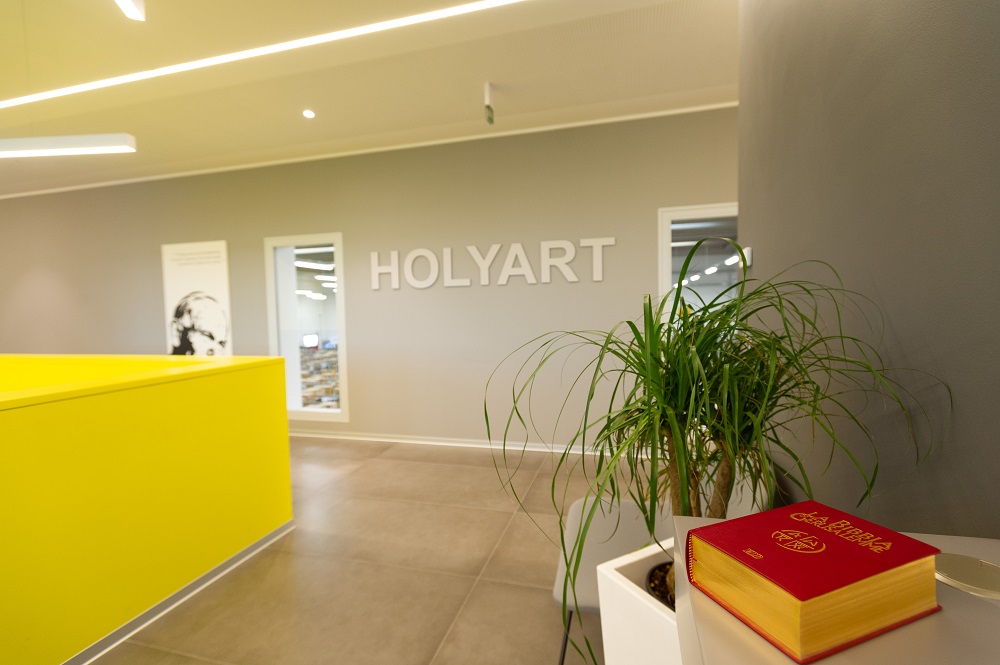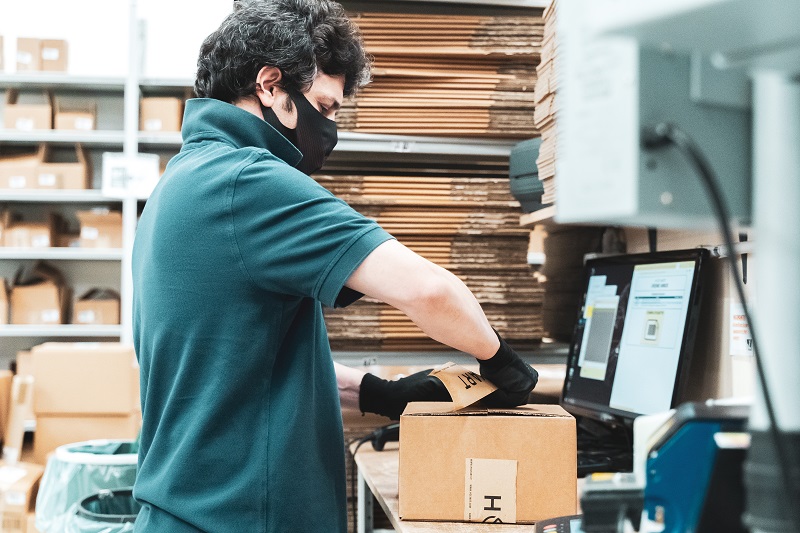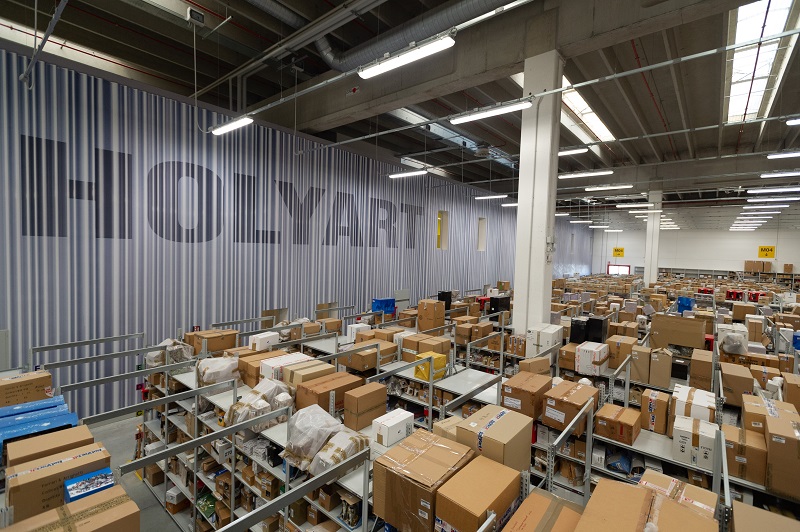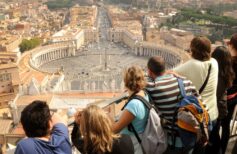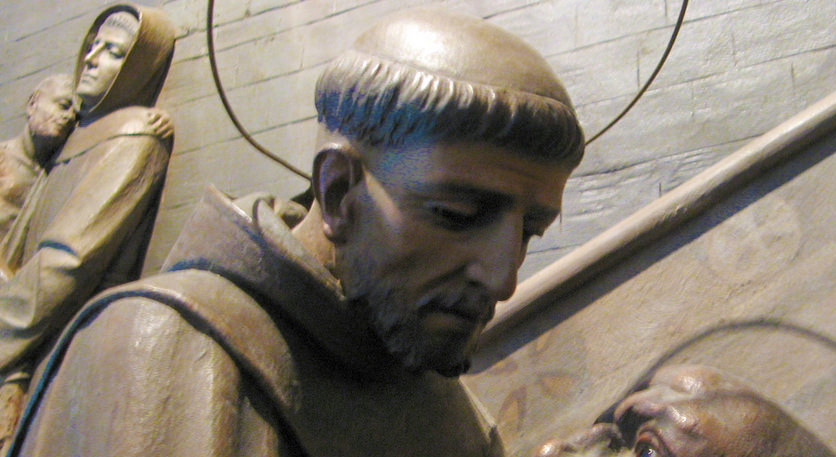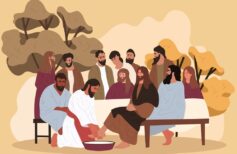Catholic blogs provide information, stories and curiosities about the Christian world. This is what drives us at Holyart to give you new and engaging content every day.
Contents
Write an article to promote our blog? Why not?
Perhaps we tend to take it for granted that Catholic blogs always and only act through a mission of evangelization and the will to address exclusively those who, already fervent believers, can look for topics close to their life and spirituality in them.
This is not entirely wrong, because truly those who like us disseminate a certain type of content do so in the full awareness that the reading will be mainly Christian and Catholic men and women, who have studied catechism, know very well the church, the Sacraments, the Gospel, dogmas, the stories of the saints.
But we at Holyart are not a simple blog linked to a Catholic newspaper, or to a diocese. We are a company, made up of people, and each of us is committed to doing our best job, for our success and your satisfaction.
We are the largest and leading e-commerce in Europe for religious articles, and our service is extended to many countries, each with dedicated customer service. This is why our site is translated into 8 foreign languages. In this scenario, it is clear that even those who write articles and keep the blog updated with always new and useful content offer a service that we believe is indispensable.
So here are 5 good reasons to read our blog. For our part, we can only renew our commitment to continue to do our best, to involve our readers more and more and convince new ones to follow us. If you already do so, we thank you for your trust and choice. We will do our best not to disappoint you.
1. Values and Mission Holyart
The first reason to read our blog is linked precisely to why the Holyart blog exists. The mission of the Holyart blog is to provide those who follow us with accurate and exact information regarding all aspects and themes of the Christian world. This is why we have chosen to divide our blog into thematic areas, easily accessible, where all the articles we insert are collected and archived in order to be found by you at any time.
Liturgy, Saints and Blesseds, Religion, but also Christmas and Special Occasions, as well as a large space dedicated to monasteries and brotherhoods.
We have tried to create a container as comprehensive as possible, which covers all the fields of interest of our readers, which can provide useful information about the products that our catalogue offers, but above all which involves the reader, with anecdotes and curiosities, even unusual ones and surprising.
The approach we have chosen is making even difficult issues accessible to anyone.
We have no academic interest, what we do is collect as many documents as possible, make sure of their veracity, and then filter them in order to make them understandable, usable and – we hope – pleasant to read for everyone. Knowledge of the Church, the stories of the Saints and the blessed, and even the Dogmas of religion are precious subjects, which should be within the reach of anyone who has the desire to approach them. At the same time, we are always aware that the issues we deal with cannot be trivialized in any way.
The task of Catholic blogs is even more difficult for this very reason: you need to be really good at creating easy-to-read texts that anyone can read on their computer or smartphone at any time of the day, while not detracting from the greatness of theological and spiritual concepts. treaties, ritual and devotional.
2. Stories of Saints
The stories of the Saints have always fascinated the Christian faithful. Perhaps because it has always been easier for ordinary people to approach religion and its great mysteries through figures of men and women like them, who knew how to live in God’s grace and conduct themselves in such a way as to deserve holiness.
Models of life and faith, objects of devotion and comfort in times of difficulty, the saints and blessed are the protagonists of fascinating stories, in which historical interest is combined with spiritual and devotional interest.
This is how we at Holyart have chosen to introduce them to you, accompanying you to discover their extraordinary lives and trying to make you feel a little closer, a little more similar. Thus the saints and blessed become friendly and understandable presences, current in their immortality, reference models to be inspired by and from which to draw the strength to face the difficulties of daily life, such as the 10 Christian Women who changed the Church and the world, or the Holy Martyrs who sacrificed their lives in the name of God.
3. Handcrafted nativity scenes
Christmas is the holiday most felt by Christians, although Easter is more important from a liturgical point of view. But the spirit of Christmas, the expectation that accompanies Advent, really involves everyone, young and old, with suggestions that come from the past, from family memories and popular traditions that over time have been mixed with religion in an indissoluble way.
It will also be that sense of warmth and intimacy that surrounds the houses, illuminated by the light of candles that warm the environment, but also the hearts, with all their deep symbolism.
Candles, therefore, but also Christmas trees, with their splendid and varied decorations, and lights, festoons, decorations for the home and for the outdoors, greeting cards, gifts, all the Christmas items you find in our catalogue are also told in our blog, to advise you and help you prepare in the best way the most beautiful party of the year.
Of course, a large space in our blog is dedicated to the Nativity scene, in all its forms, but in particular, to the handcrafted Nativity Scenes, the DIY Nativity Scenes that so engage and excite those who follow.
To help you create your unique and special nativity scene, we not only publish insights into the most beautiful nativity scenes in Italy, or the nativity scene in the world, but also practical tutorials on how to build a DIY nativity scene, or how to create your own nativity scene with a waterfall in a few simple steps or how to build a Neapolitan nativity scene.
The Neapolitan Nativity scene in particular is the protagonist of many articles, where all the deepest and most fascinating aspects of its tradition are examined, from the symbolism of the characters to the trades to the sets.
4. Liturgical Times and Calendars
Understanding what the liturgical times of the Catholic Church are and how they are divided is fundamental for a Christian. But it is not always easy, and often even Catholic blogs fail to define it fully and clearly for everyone. For this reason, in a recent article on our blog, we wanted to summarize the division of the liturgical year into liturgical times, precisely to help those who still have doubts to understand in a concise and synthetic way how the liturgical times of the church are organized.
Not only that, we try to keep you up to date on the holidays (the ones that change and not) and on the celebrations that accompany the salient moments not only of the liturgical year but also the feasts linked to individual saints, identifying for you the most evocative celebrations with which they are remembered. the various recurrences, such as the Assumption of Mary, just to give an example or the feast of Corpus Domini. But let us not overlook other recurrences that are not strictly religious, but equally important for us and worthy of being remembered by Christians, such as Grandparents’ Day or World Friendship Day.
Again, we want to inform you about sacred furnishings and vestments, explaining why certain objects or materials are used in celebrations and what certain customs derive from. For this reason, we also dedicate in-depth articles to chalices, pyxes, and patens, to help priests choose the chalice that suits their needs, or which materials are better to prefer for mass services or for baptism services.
Vestments and liturgical garments are featured in other articles, to help readers understand the different meanings of liturgical garments or the colours of the Catholic liturgy and their meaning.
5. Made in Italy craftsmanship
Another of the missions that we have set ourselves to carry out with our online catalog and with our blog is the promotion and dissemination of products and working realities linked to the tradition of made in Italy and quality. These are small businesses, often family-run, some with an ancient and illustrious history, made of love for detail and respect for their work. Like our suppliers of sacred plaster statues, who carry out their work in an artisanal way with great professionalism and attention to detail, or like those who create for us exclusive religious metal jewels decorated with enamel according to craftsmanship methods, made almost entirely in hand and cared for in every aspect.
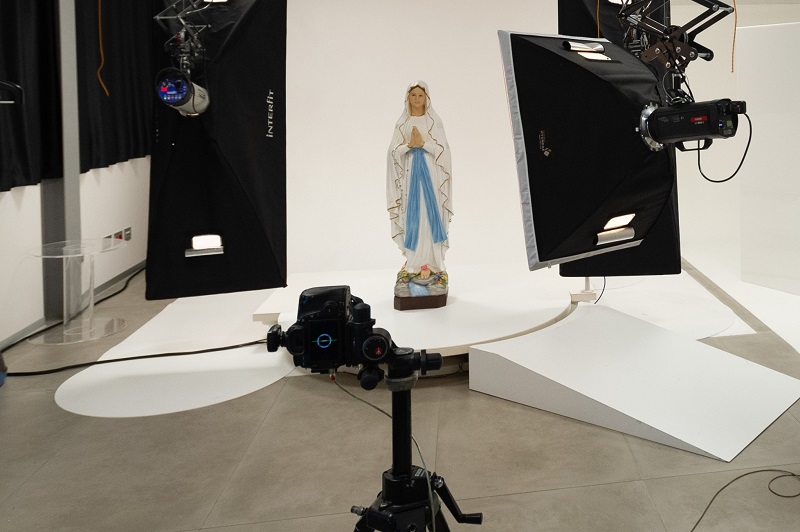
And then there are the products of Italian monasteries, food excellence, but not only. Of course, we have dedicated many insights to liqueurs and jams made in monasteries, with genuine ingredients and traditional methods handed down by monks over the centuries, as well as to herbal health products, such as propolis and all its benefits, cosmetic creams of a thousand virtues, and so on. But our goal is to talk not only about products but also about the history behind them, a history made up of men and small and large events, made above all of dedication to work and faith.
So, for example, speaking of the excellent monastic beers, appreciated all over the world, we also wanted to dwell on the holy brewers and their miracles, revealing to our readers legends and curiosities about the saints who inspired the master brewers over the centuries, or telling you about the atelier d’art de Bethleem we wanted to talk about craft techniques and the life of the nuns who work there.
As always, men and women first of all.

